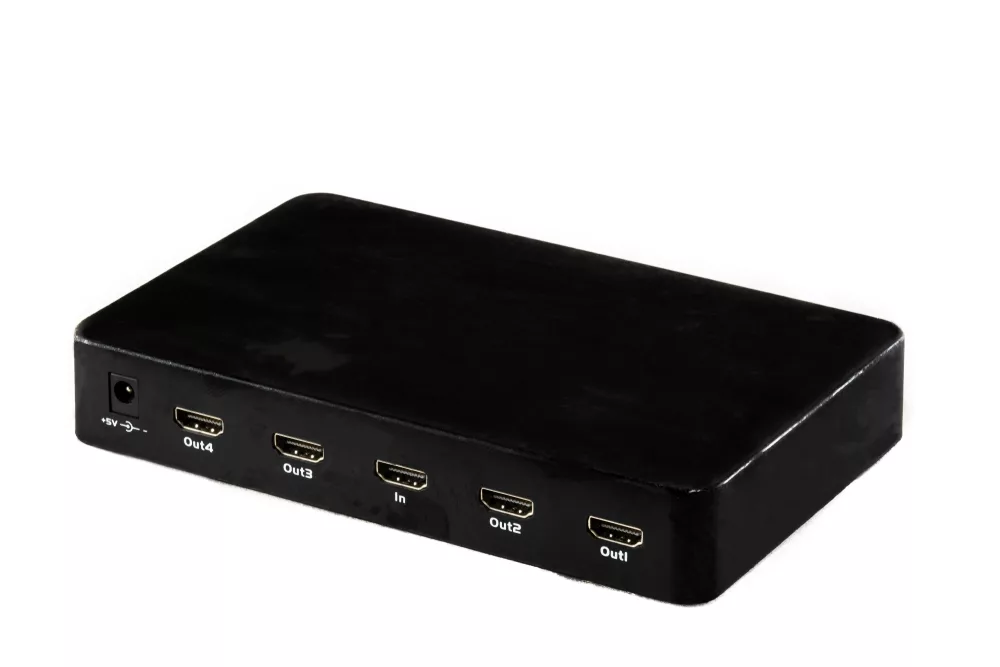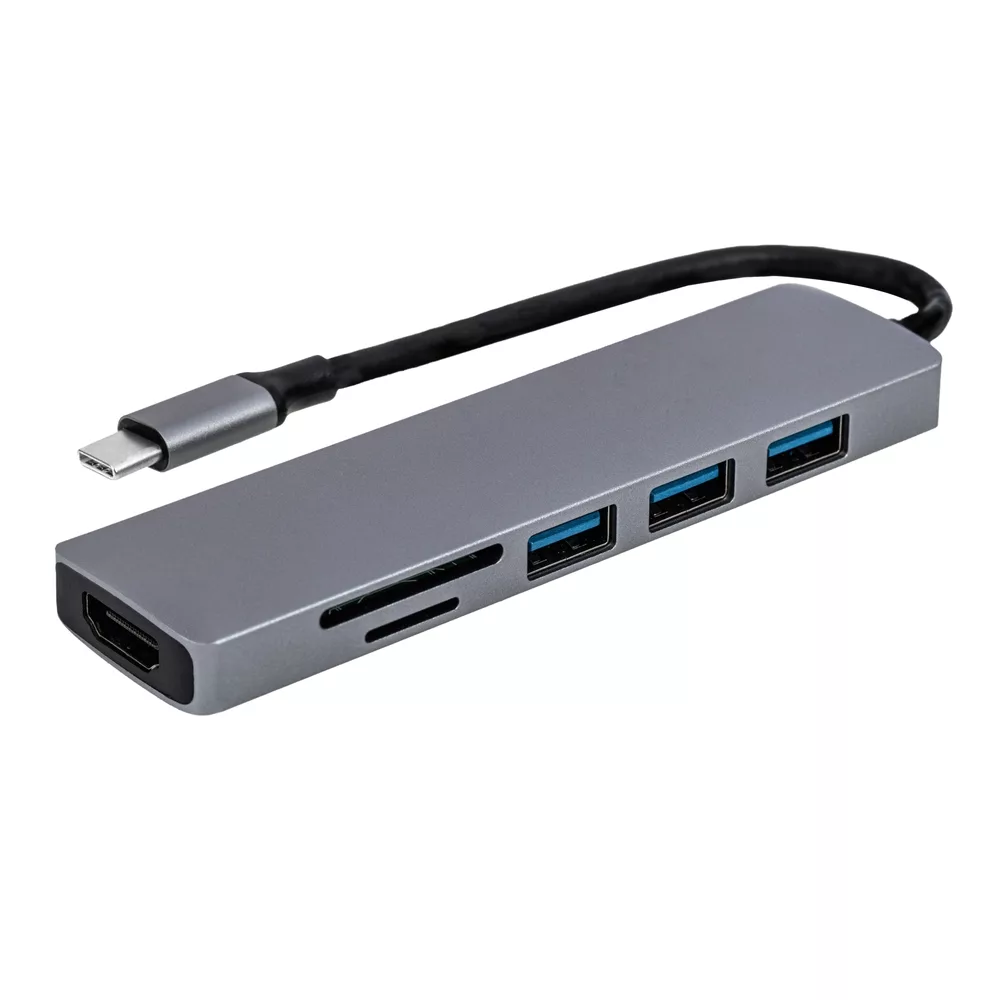How to connect two TVs with an HDMI cable? Have you ever observed multiple screens displaying the same content in airports, railway stations, events and big restaurants?
It is done to convey the same data to a larger audience. But how is it done?
There are several options, but the most popular and usable one is through an HDMI splitter.
We will learn about it in the following blog post.
Table of Contents
Is it possible to connect two TVs with HDMI?
Yes, it is.
The primary input we see in our communication devices is HDMI input. Your AV equipment and TV have HDMI ports, and you can insert an HDMI cable into the ports to connect them.
HDMI is suitable for both digital and audio data.
Modern TVs come with at least 4 HDMI inputs to connect game consoles, Blu-Ray players, Sky boxes or satellite RXs, and others, and that too all at once.
The best part of using HDMI is that it constantly gets updated with the updates in image resolutions like 4K, 8K, and HD.
Besides, the cable also supports 7.1 surround sound systems.
Apart from the regular HDMI ports, there must be an HDMI port labeled “HDMI ARC or High-definition Multimedia Interface (Audio Return Channel).
It is an input/output port that serves as an input port for the audio-visual receivers’ sound systems and an output port for TV soundbars.
Connecting two televisions using HDMI splitter
| Method | Application | Materials | Setup |
| Dual TV setup(Delivers the same image from a single source) | You must have noticed in some large events that multiple displays of the same output come from a single source. You can also arrange this setup where a single source will display the same content on multiple screens at any corner of your home. | Source device-HDMI cable- HDMI splitter-HDMI cable again-first TV; HDMi splitter-HDMI cable-Second TV | Source device-HDMI cable- HDMI splitter-HDMI cable again-first TV; HDMI splitter-HDMI cable-Second TV |
| Dual TV setup(Delivers different images from a single source) | It has a different arrangement where multiple displays are placed in an array, and every adjacent unit extends the viewport called video walls. As a result, you get a bigger image than you could see on a single television. | An input source device(USB3.0/USB-C compatible);A USB3.0/USB-C cable;A docking station;HDMI cables (2 in number);Two TVs (HDMI compatible | Desktop/laptop- USB3.0/USB-C cable- docking station-HDMI cableFirst TV;Docking station-HDMI cable-second TV |

An HDMI splitter
Is it possible to daisy chain two TVs with HDMI?
No, it is not.
Daisy chain works for a few monitors but does not support TVs for the following reasons.
HDMI format does not support daisy chain. Only Thunderbolt and DisplayPort formats support daisy chains, and TVs don’t have any of these ports.
Secondly, televisions do not come with an HDMI output port. So, how will you connect the first TV’s output port to the best input port to create a daisy chain?
If you do so, you will only plug an HDMI cable into the input ports of both televisions, ending up getting nothing or a “no signal” message on your screen.
Thus, the only viable solution for connecting two Tvs with the same source device is a docking station or an HDMI splitter.

A docking station
What are the other ways to connect two TVs?
The updated HDMI version, i.e., 2.0, does not allow signal splitting straight from the source. So, look at the other options for connecting two TVs.
Connecting two TVs via DisplayPort MST (Multi-stream Transport) hub:
DisplayPort has MST technology that allows signal transmission to several displays. You can easily use their DisplayPort function with a laptop or desktop PC as a source device.
Benefits of this technology:
- As we read, DisplayPort is capable of a daisy chain; you can chain all screens from the source device. An added benefit is that you won’t face any problem with cable length restriction too.
- You get better video quality with DisplayPort than HDMI.
- When using an HDMI splitter, you need an additional plug for the power adapter, which might hinder reaching the monitors.
- DisplayPort 1.1 does not allow extended modes, but the 1. The version supports both extended and mirror modes.
Limitations of this technology:
- This technology is suitable for laptops and desktop computers only. Mac and other computers running on different operating systems other than Windows don’t have DisplayPort. Also, you cannot use this technology when source devices are Blu-ray and DVD.
- The number of monitors you can add to this setup depends on the load-bearing capacity of the graphic card.
- DisplayPort 1.2 is better as it supports both modes but is slightly pricier than the DisplayPort 1.1 version.
- DisplayPort technology is also more expensive than HDMI splitters.
- Cable length is still a restriction in this technology.
Connecting two TVs with an Ethernet cable:
If your source device has an HDMI output, using an HDMI extender splitter over a Cat6 adapter is best to overcome quality and length issues.
Although the device includes the word “extender” in its name, it does not extend the viewpoint. It only splits the signal to your similar display devices, i.e., mirror mode.
Benefits of this technology:
- This technology has a larger reach and better quality; thus, they are a preferable option for commercial setups for connecting two or more TVs.
- In this device, a transmitter captures the video signals and sends them to all the output sources. The transmitter connects to these sources via Cat5e/6/7 ethernet cable.
- This option allows you to send signals up to 130 feet with minimal degradation.
Limitations of this technology:
- It only works for the video signals and not for the audio.
- It is more costly than DisplayPort technology.
- Absence of extended video wall mode. Only mirror mode is available.
- Cables used to plug transmitters and receivers to the power, HDMI and Cat ethernet cables, cable for adding reception modules, and others make it a messy arrangement.
Connecting two TVs together through Chromecast:
Manufactured by Google, this dongle-like device allows the streaming of data from your computer to all the TVs on this device.
The Chromecast allows you to send signals from the source to the TV via your network.
Advantages of using Chromecast technology:
- The best part of using Chromecast is the great image quality you get. However, here also, you cannot extend the viewport.
- A relatively cheaper option than other technologies.
- You can use as many Chromecast devices as you want on your network.
- No messy cables in this system.
Disadvantages of Chromecast:
- If you are not tech-savvy, it can be tricky for you to set up this system.
- You will need a power connection for every Chromecast device you use. In modern TVs, you have USB connections, but for older devices, you will have to buy an extra power cable.
- The connection of the Chromecast system depends on your network capabilities. Absence of extended video wall mode.
Conclusion:
So, you have learned different ways to connect two TVs. Every method has its pros and cons.
You can choose any of the above methods based on your source device, the distance between devices, and your ability to spend on cables and devices.
All these devices need high-quality HDMI, Cat(x) ethernet and other types of cables for their functioning.
No need to wander around for cables as Cloom has a wide range of options for you. Choose from our range of cable assemblies and wiring harnesses.
Get customized solutions if your application demands.
